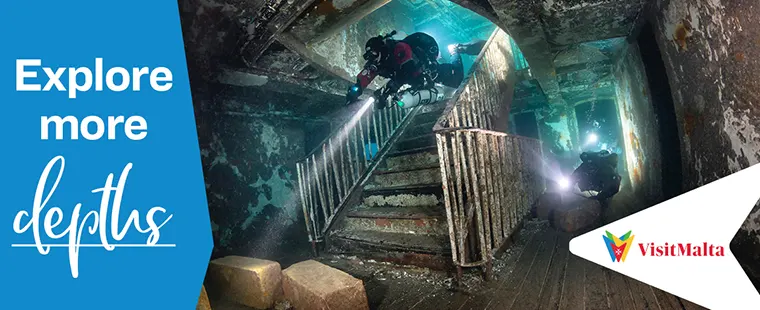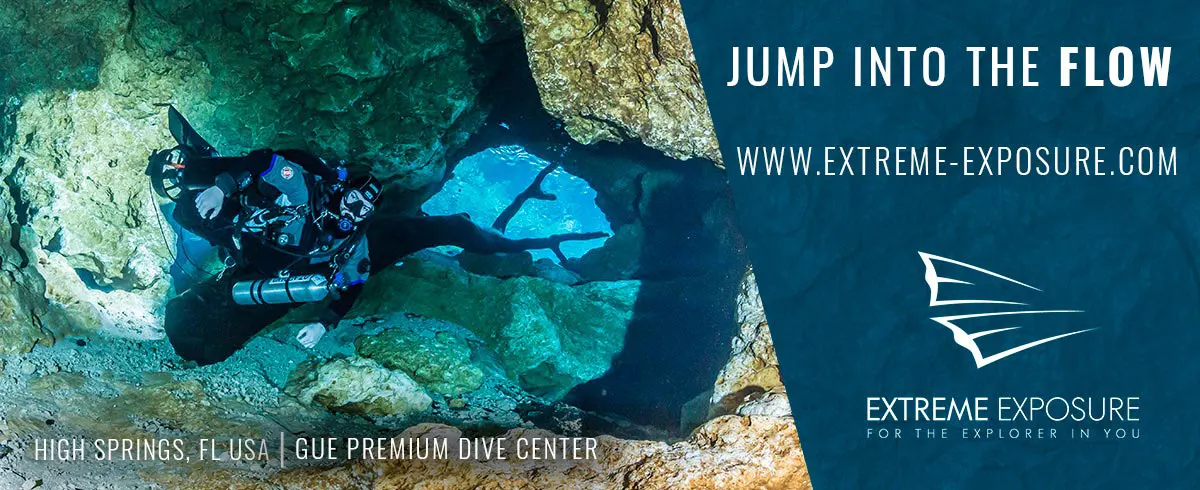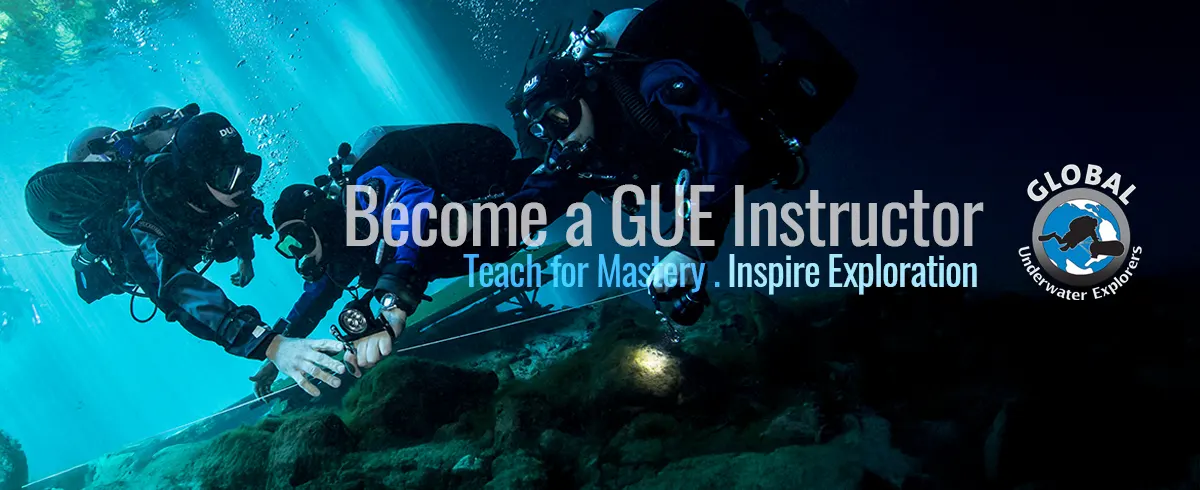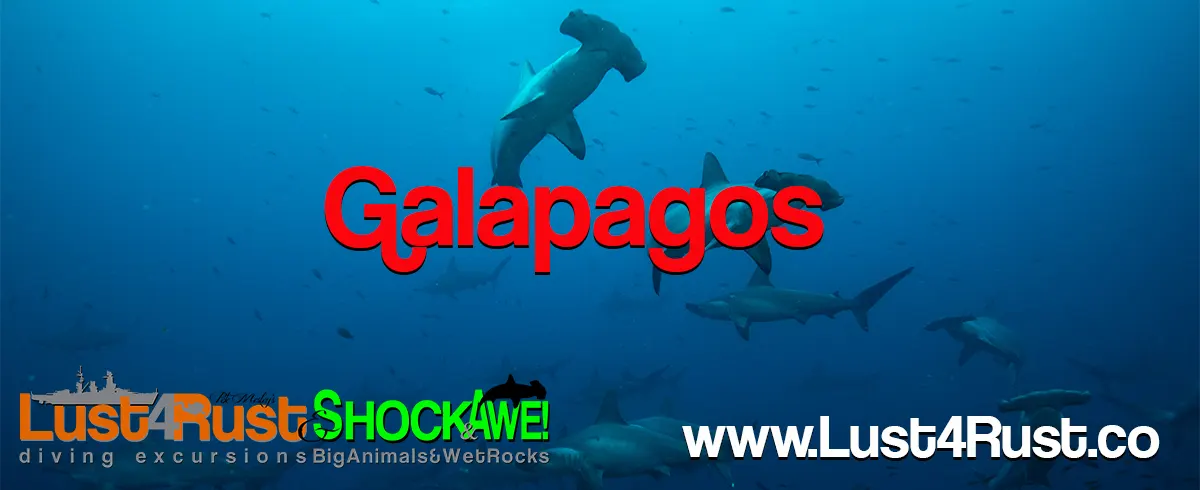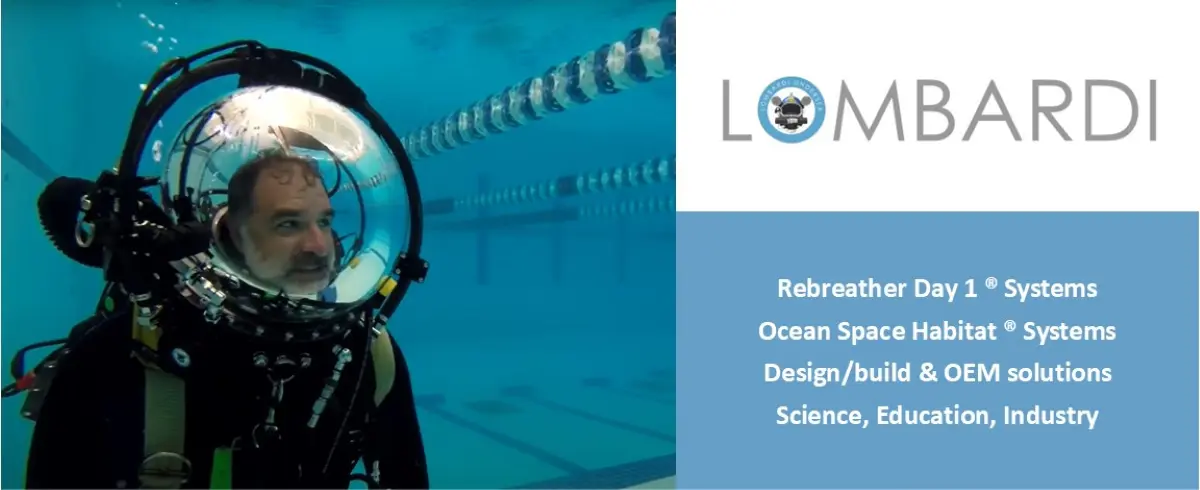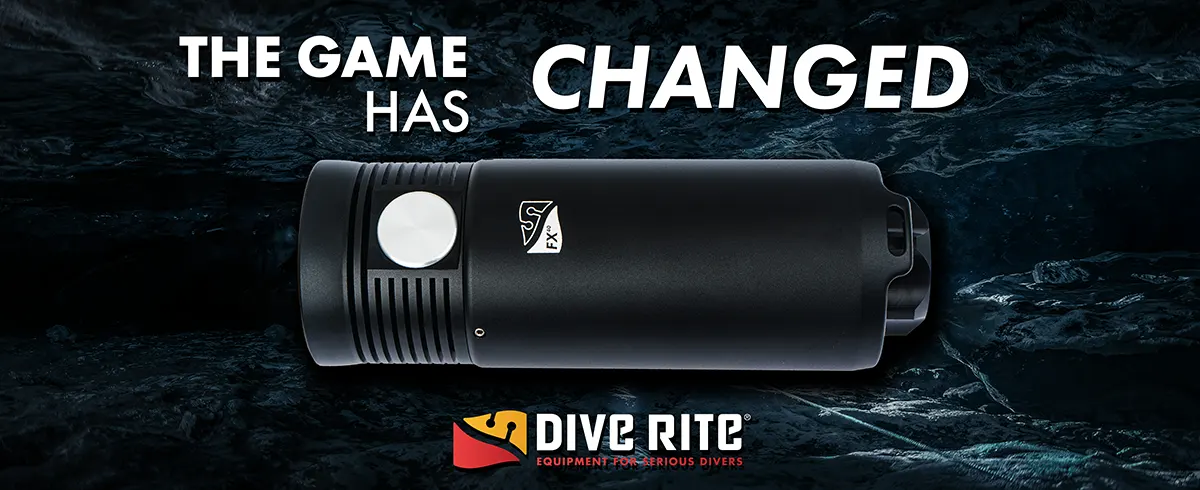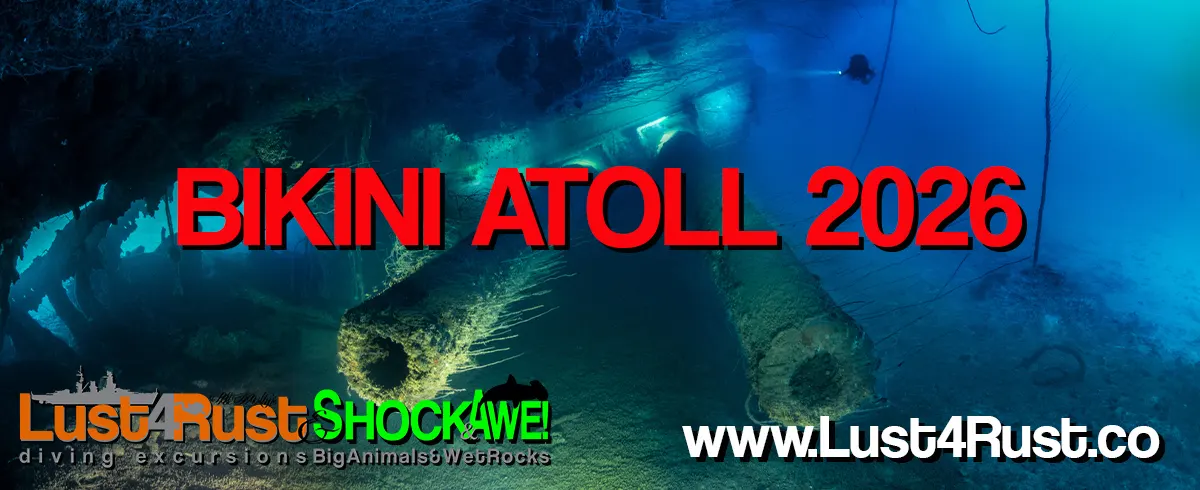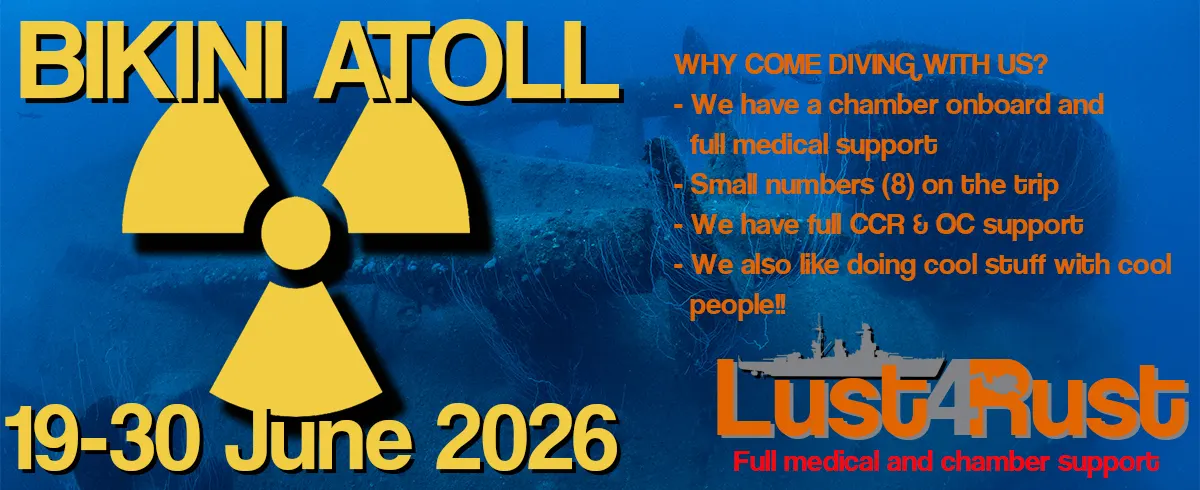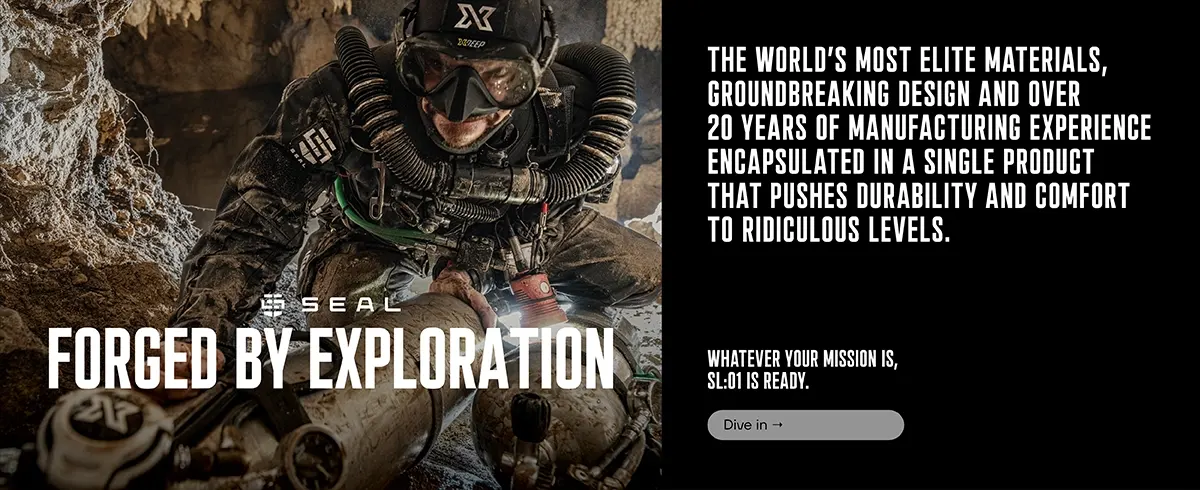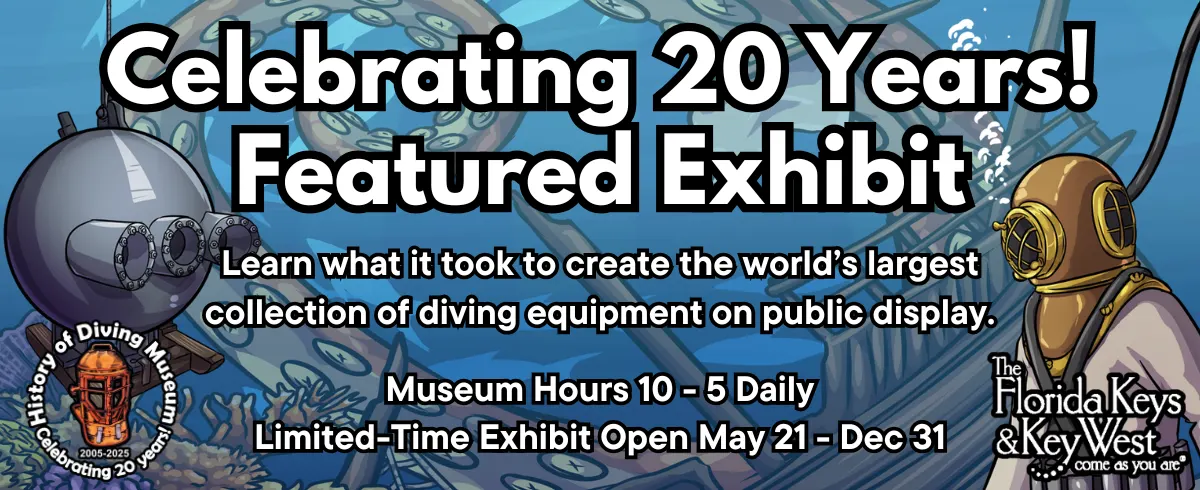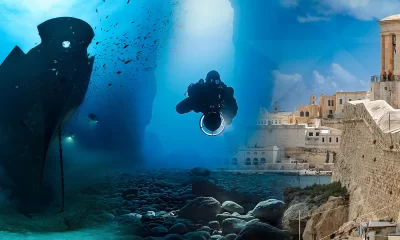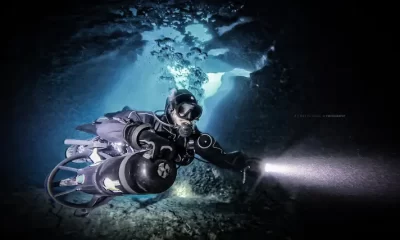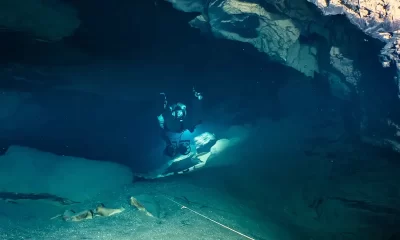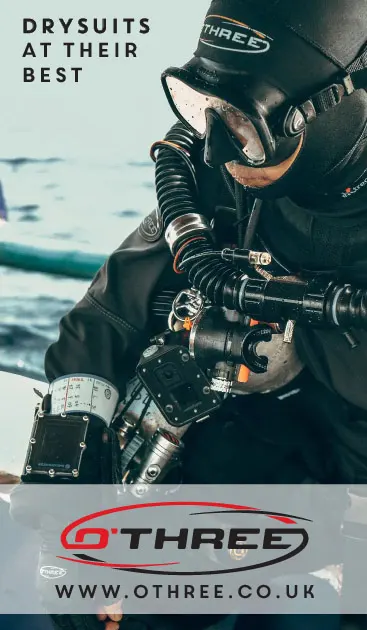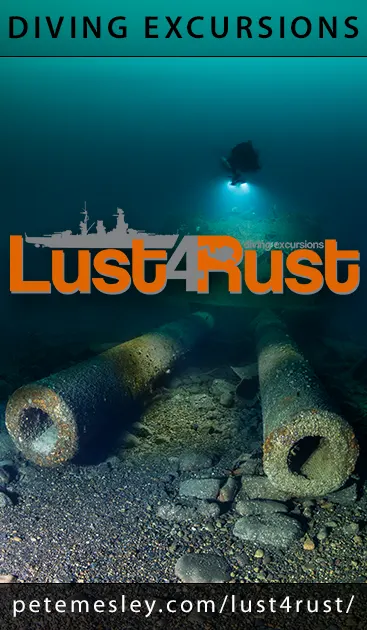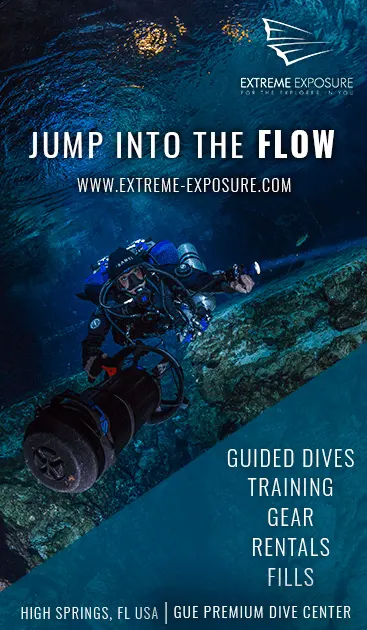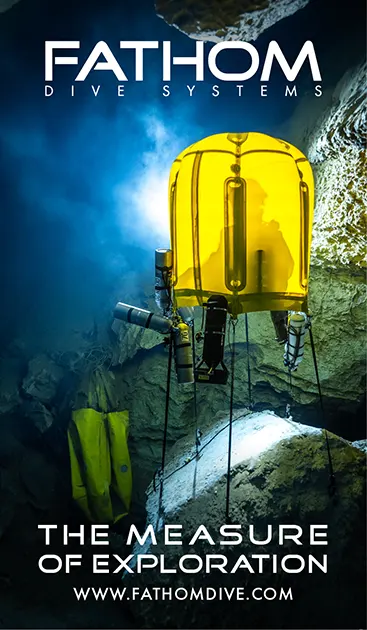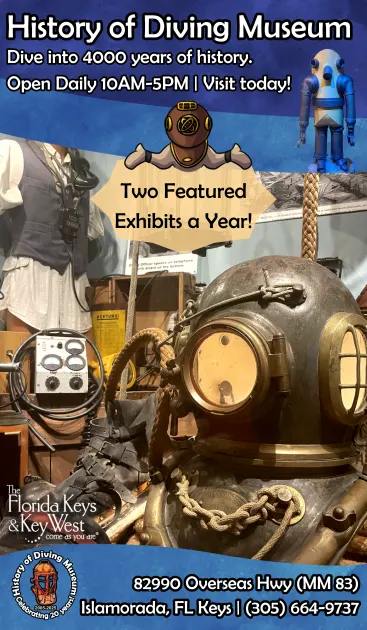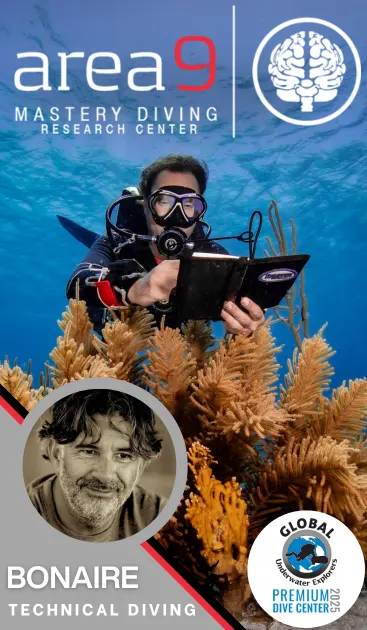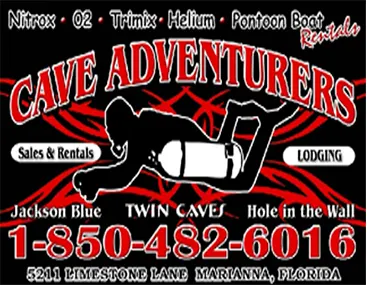Wreck Diving
My Love Affair With Malta—The Chuuk Lagoon of the Mediterranean
by Paul Toomer. Photos credits as noted.
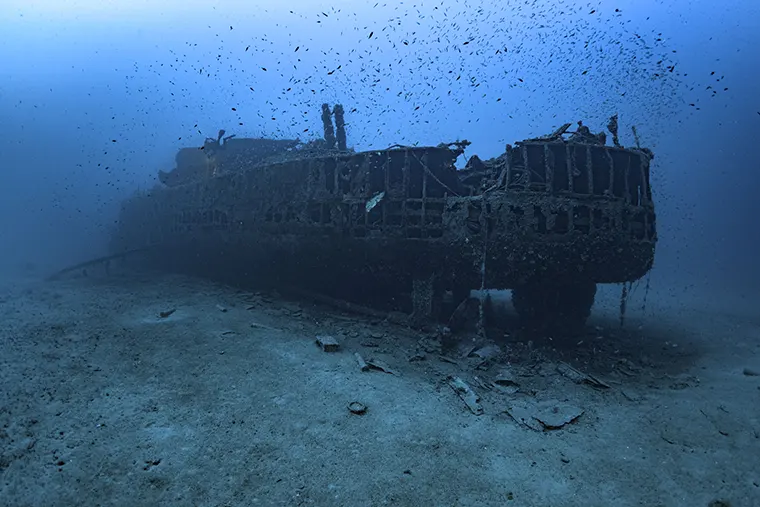
After 23 years living in South Africa, I credit sheer luck for how I ended up living and working as a dive instructor in Malta and Gozo. I cannot even begin to explain how grateful I am that Malta became a part of my life.
So, how did it happen? I had two busy dive centres in London; as a technical diving instructor, I was concentrating much more on the training aspect of the business.
I had multiple courses booked back-to-back when my ex-girlfriend called me up to ask if I’d join her on a trip to Gozo. She was in remission from cancer and wanted to visit, and dive with, the centre that taught her to scuba dive.
Because I had so much work going on, I declined. But I felt so damn guilty that, after some research into the diving in Malta and Gozo, I asked my students if they would move the course from a quarry in England to Gozo.
From the moment I arrived, I fell in love with the country. The people, the diving, the food, the Mediterranean—why had I never dived here before? I fell so much in love with Malta that I didn’t go home for three months, and I transferred all my training from England to these beautiful islands.
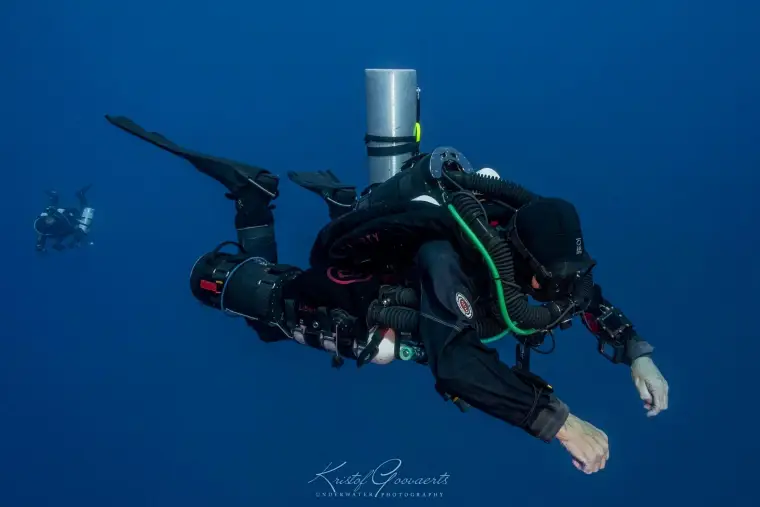
A Historical Hotbed
Malta is steeped in history and has been fought over and contested more than any other island on earth. To name just a few, the Ottomans, the Romans, the British, and the Germans all wanted these islands—simply because of their strategic, geographic importance. Controlling Malta means you can control much of the flow of shipping in the Mediterranean and to North Africa.
And it’s because of this history that Malta has become a technical and wreck diver’s heaven. Tech divers often describe Malta as “The Chuuk Lagoon of the Mediterranean.”
And it absolutely is. There are wrecks ranging from when the Phoenicians travelled the Mediterranean (roughly 700BC) to World War I and II planes, destroyers, and submarines. If you are into wrecks, Malta is a must for your bucket list.
If you are into your WWII wrecks, you will have the time of your life here—Malta succumbed to more bombing than London during the second World War. My favourite little piece of Maltese WWII history is the fact that, when the Germans launched their offensive against the British and Maltese in June 1940, Malta was protected by three obsolete biplanes nicknamed Faith, Hope, and Charity. These planes were found in boxes, built using basic plans, and flown by volunteers who engaged the enemy raiders (who were flying much more advanced aircraft) until more modern planes and pilots arrived in Malta. Utterly amazing.
A Diver’s Paradise
The beauty of Malta and Gozo is that diving is heavily supported by organisations like Heritage Malta and the Malta Tourism Association as a leading tourism option for people visiting the islands. When it comes to diving, 100 m/330 ft wall dives can be done straight from the shore, and most wrecks are either a short swim or very short boat ride away from shore.
The tourism authorities and the local dive centres have also worked incredibly well together and have sunk several wrecks for both recreational and technical divers. There is one dive site off Gozo where divers can actually dive four different wrecks in one dive.
The Maltese dive centres have really embraced the technical community with many dive centres offering technical, sidemount, and full rebreather support. Many now even offer scooter rentals to allow these amazing dive sites to be fully explored.
Most dive boats cater to technical divers and are spacious enough for divers carrying a lot of equipment. Most boats have now installed lifts so that divers can be removed from the water in a much safer way than using a traditional ladder. In addition, many have decompression stations that can easily be deployed to allow for a more comfortable and controlled decompression.
Because Malta has such strict laws regarding removing artifacts—or “spidging,” as it’s affectionately known—from the wrecks, no one takes anything—so the wrecks are mind-blowing (not to mention the 30 m/100 ft visibility). If you take any artifacts from a wreck, you can end up with a heavy fine, perhaps even a jail sentence; this can apply to the boat operator as well. It must also be noted that many of the World War One and Two wrecks are designated as war graves, so penetration is not allowed.
Let’s have a look at some of the amazing wrecks that litter the ocean floor around Malta and Gozo.
A Taste of Maltese Wrecks
My favourite wreck has to be the British WWII destroyer HMS Southwold. Broken into two sections, the bow lies in a depth of 65 m/213 ft and the stern sits about 300 m/984 ft away in 72 m/236 ft of water. The wreck is a war grave, and caution must be exercised, as there is a LOT of unexploded ordnance. I cannot begin to remember the number of times I have had to retrieve shot lines that have become snagged in the piles of depth charges lying all over the ocean floor. That is a true “sphincter” moment, I can assure you.
And what a sight! The wreck sits perfectly upright on the bottom and still has two great anti-aircraft guns on her stern pointing to the sky. The ocean floor is littered with unexploded shells and other debris left when she sank. Ascending over her deck, you cruise over the guns and across the crew’s quarters. Through the broken and smashed walls, you can see the bathrooms and toilets—incredible.
I have dozens of dives on this wreck, and I reckon that if I dived it every day for the rest of my life, I’d never get bored.
The HMS Stubborn is a British Shark class submarine that was actually scuttled after sustaining heavy damage due to depth charge attacks and exceeding its design depth limit. Stubborn fell to 122 m/400 ft, and her Captain was forced to blow the main ballast to get her to the surface.
According to stories, the plan was to refit the submarine, but the “powers that be” decided that, since the vessel had survived the war, Stubborn would be scuttled off Malta and used for sonar practice. And you have no idea how grateful I am.
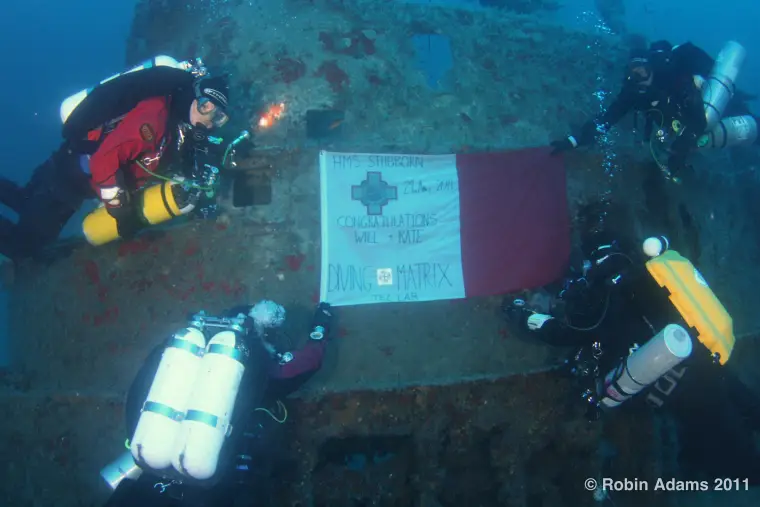
The boat lies in 56 m/184 ft of water and, like most WWII submarines, she is actually quite small and everything that could have been used again was stripped off. But make no mistake:This is one heck of a dive.
Swimming along the deck and exploring the fin (conning tower) is just amazing, but the ‘money shot’ is the bow. Because the submarine sits flat on the bottom with only a slight list to port, swimming off the bow a good 10 to 20 m/30 to 60 ft and then turning 180 degrees to face the bow is awe inspiring. It looks like the submarine is sailing straight at you. Since the visibility is so amazing around Malta, photographers can take a photo from around 30 m/100 ft, and they will capture the entire submarine set against the snow-white ocean floor.
For those professional divers reading this, the Stubborn is absolutely perfect for technical and rebreather diver training.
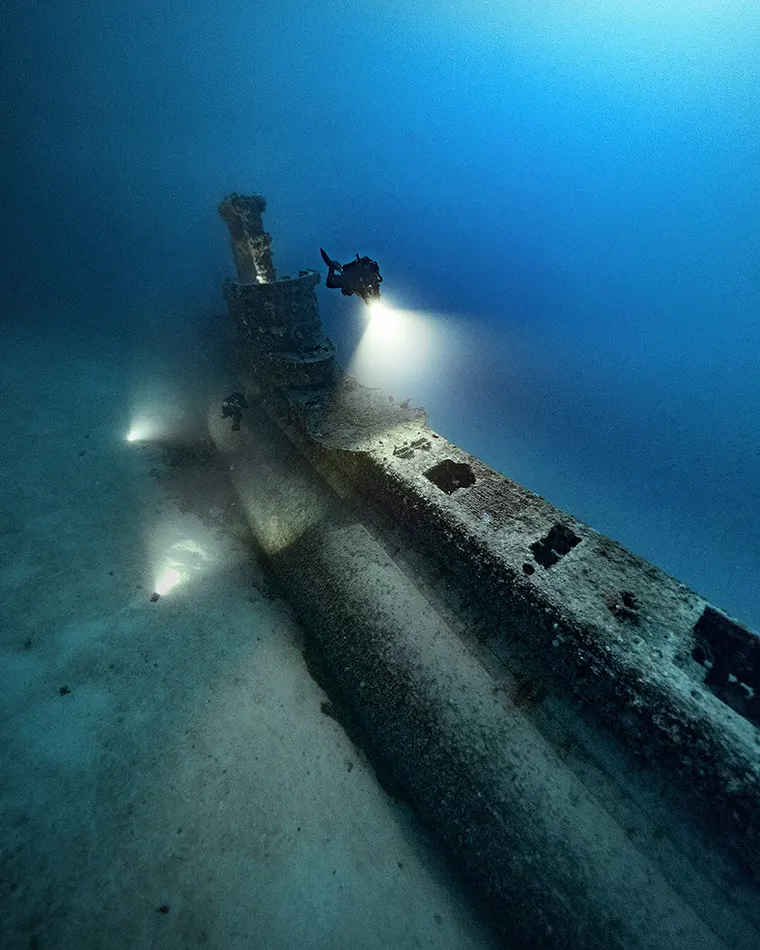
My Grandad once said that it is better to be born lucky than rich, and how lucky was I when one of my best friends, Gianmichele Iaria, introduced me to a gentleman called Professor Timmy Gambin, who accepted me on his team to dive wrecks all around Malta and Gozo (a few in Italy too, but that’s another story).
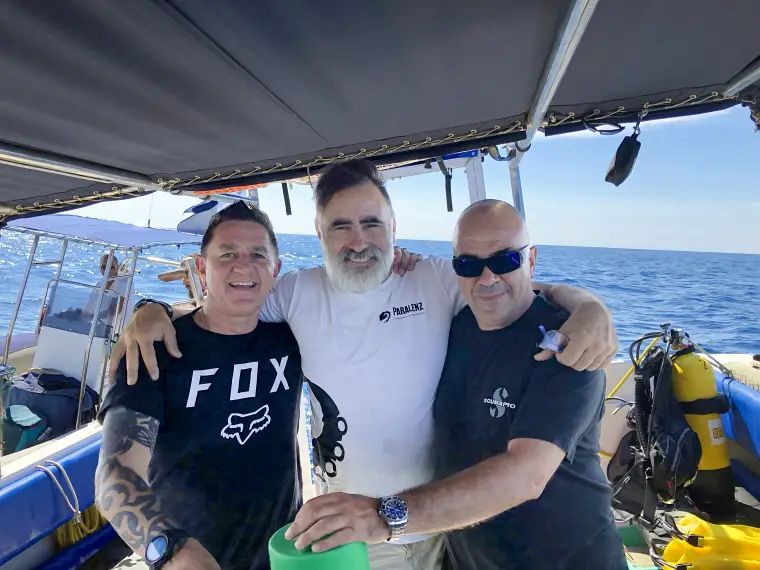
As mentioned before, I was incredibly lucky to have been invited by Prof. Timmy Gambin to participate in dives to 110 m/360 ft on a 2,700 year old Phoenician Amphora Wreck in Gozo. Yes, you read that right, TWO THOUSAND SEVEN HUNDRED years.
The dive site is quite small, but the historical value of the site is immense. After receiving permission and with much consideration, certain artefacts were lifted to the surface. Strict forensic protocols were put in place which has allowed scientists and historians to examine these artefacts and extract isotopes and DNA to try and build detailed images of so many things: including sedimentary deposits within the amphora and, indeed, the Phoenicians themselves.
The wreck project lasted several years, and surface research is still ongoing. For me, the privilege of joining this incredible team to work and dive on this wreck is beyond my powers of expression—certainly without the use of many expletives.
Unfortunately, due to the scientific value of this wreck, diving on the vessel is extremely limited,and the wreck is often off limits completely.
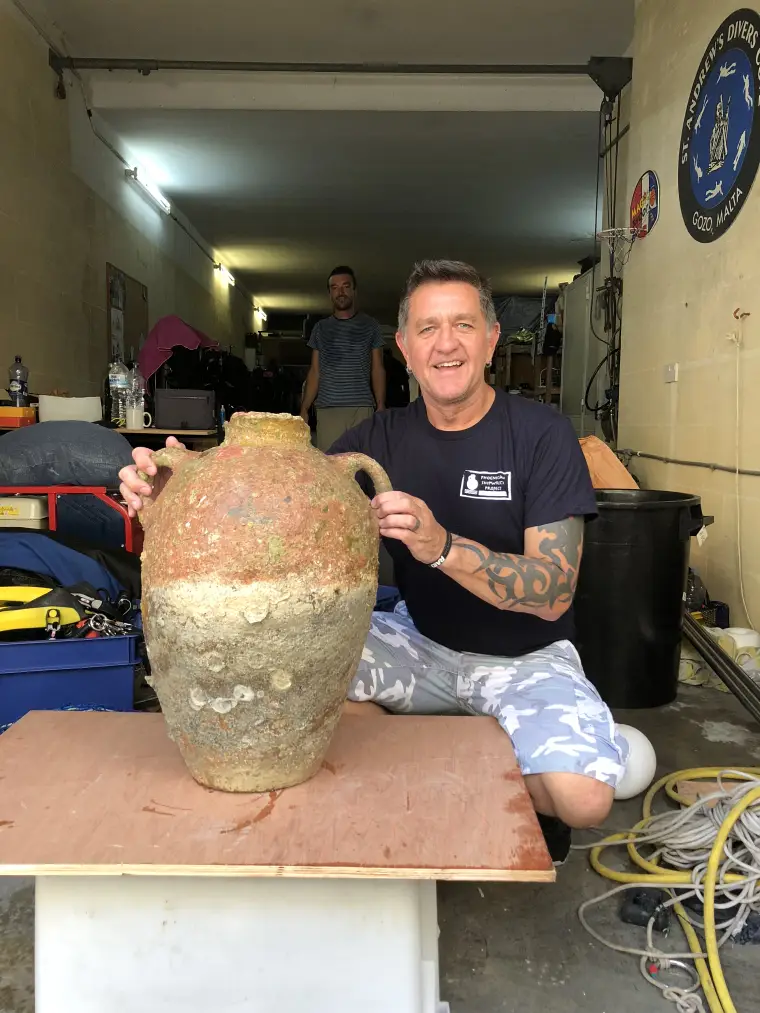
In 2018, I was invited to participate in another “Timmy project,” this time to an American B24 Liberator Heavy Bomber. The plane crash-landed into the sea in 1943 just outside Marsaxlokk and rests at a depth of 55 m/180 ft on a sandy seabed. There were ten crew on board the plane; nine were rescued but, unfortunately, one crew member was missing.
The plane was discovered in 2015 and, during 2018 and 2019, the US Defense Prisoner of War and Missing in Action Accounting Agency (DPAA) supported the Maritime Archaeology Programme at the University of Malta’s excavation of the B24 wreck site. The aim was to identify that this was the missing B24 and attempt to retrieve the remains of the missing crew member, Sergeant Irving R. Newman.
Descending onto the dive site is astonishing, since the plane is visible from quite a shallow depth and appears to still be flying. The wings are suspended above the seabed with engines still attached. The cockpit still has much of the instrumentation clearly visible, and it is so easy to visualise the pilot and copilot sitting together flying over Europe. If this does not get your imagination running wild, nothing will.
The tail section of the plane is missing, but this does not detract from the experience. In fact, it may add to it: The entire inside of the plane is easily visible with oxygen kits floating on the ceiling and 50 calibre shells strewn about on the deck. Simply because of the size of most plane wrecks, one dive is often enough, but, having done many dives on this glorious B24, I found there was always something new to discover.
The wonderful fact about this wreck is that the excavation team discovered some remains and, in August 2023, the DPAA officially identified the remains as Sgt Newman. This is an absolute ‘must do’ dive for anyone capable of diving to this depth.
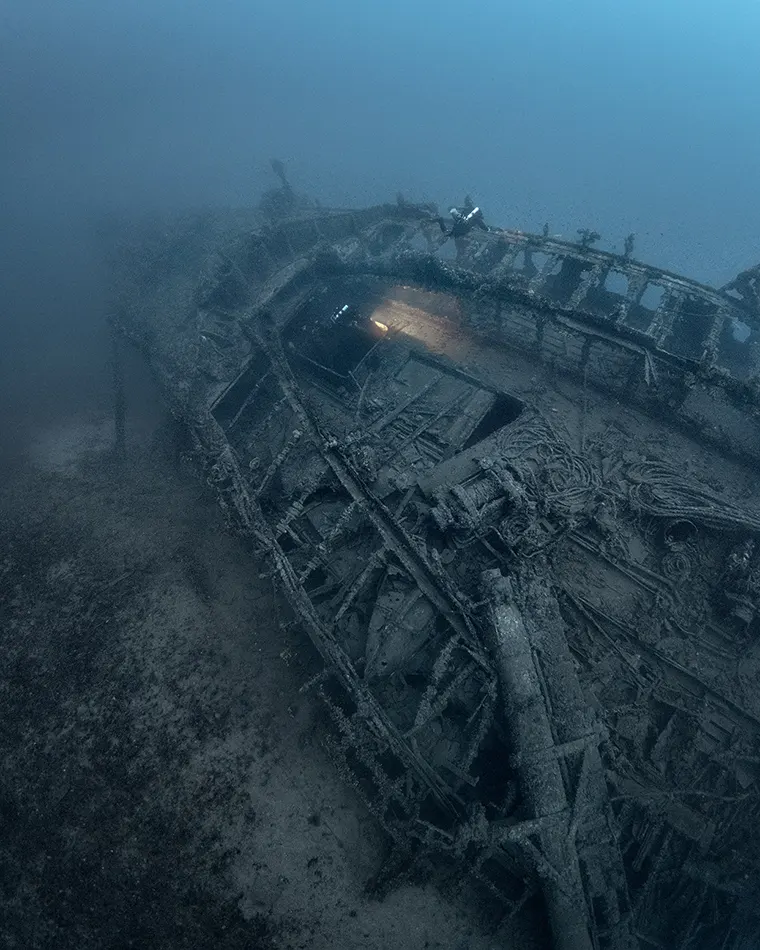
The SS Polynesien is a French passenger ocean liner; launched in 1890, she was requisitioned by the French Navy and used as a troop transport vessel. She was torpedoed by a German submarine resulting in the loss of 17 lives.
The vessel lies in around 68 m/223 ft of water and is positioned at a 45-degree angle on her port side. This detail is extremely important—most currents washing across the wreck allow divers to explore the decks and hold in the lee. This is great for the dive, but the ascent and descent can sometimes be challenging (but so worth it).
This wreck is split in two parts, but both can be done in one dive—not that one dive is even remotely enough to explore this magnificent wreck.
There are dozens of wrecks to dive in Malta and Gozo, and an encyclopaedia could easily be written describing them. No matter what kind of wreck you like, you simply cannot get bored wreck diving in Malta: this amazing country has everything.
On a personal note, I would like to thank Professor Timmy Gambin from the University team for allowing me to experience these wrecks. On his behalf, it is only fair that we thank Malta Tourist Authority, Heritage Malta, and the University of Malta, as they have given amazing support to these projects.
For detailed information on most of the Maltese wrecks, please do visit: The Virtual Museum Underwater Malta
Return to Malta, May I?
DIVE DEEPER
DIVER: Can This Man Save The Diving Industry? Interview With Paul Toomer (2018) by Michael Menduno
InDEPTH: Explore, Record and Share: A Dive into Malta’s UW Cultural Heritage!
InDEPTH: How the Smallest Country in the EU Became its Scuba Diving Capital

After living in South Africa for 23 years, it’s odd that Paul discovered diving in the cold waters of Southern England. It is this kind of behaviour that defines Paul and his passion for doing things differently. Within months of learning to dive, he had his own centre in London and rapidly progressed to Course Director before finding his passion for technical diving in 2002. In 2007, he decided to concentrate purely on technical diver training and expeditions, and Diving Matrix Tec Lab was born. Tec Lab is innovative in its design and philosophy and sets the benchmark for advanced diver training.
Paul is also a co-owner of RAID International training agency. He is qualified on multiple rebreathers including Liberty side and backmount, Hollis Prism 2, XCCR, JJ, Defender, Inspiration, LungFish, and the Poseidon Se7en. He has dived caves and wrecks all over the world and also safely planned and executed many deep ocean wreck dives. Paul has participated in multiple expeditions including the HMS Hampshire, Royal Oak, and Vanguard in Scapa Flow. In Malta, he has worked on ancient Italian and Phoenician amphora wrecks and has participated in exploratory dives on the Polish destroyer L-72, the British submarine HMS Olympus, and an American WWII B-24 bomber. Participating in these expeditions qualified Paul to become a member of the prestigious Explorers Club in New York. A young man named Sebastian, motorcycles, tattoos, and playing drums are the other major influences in Paul’s life.

